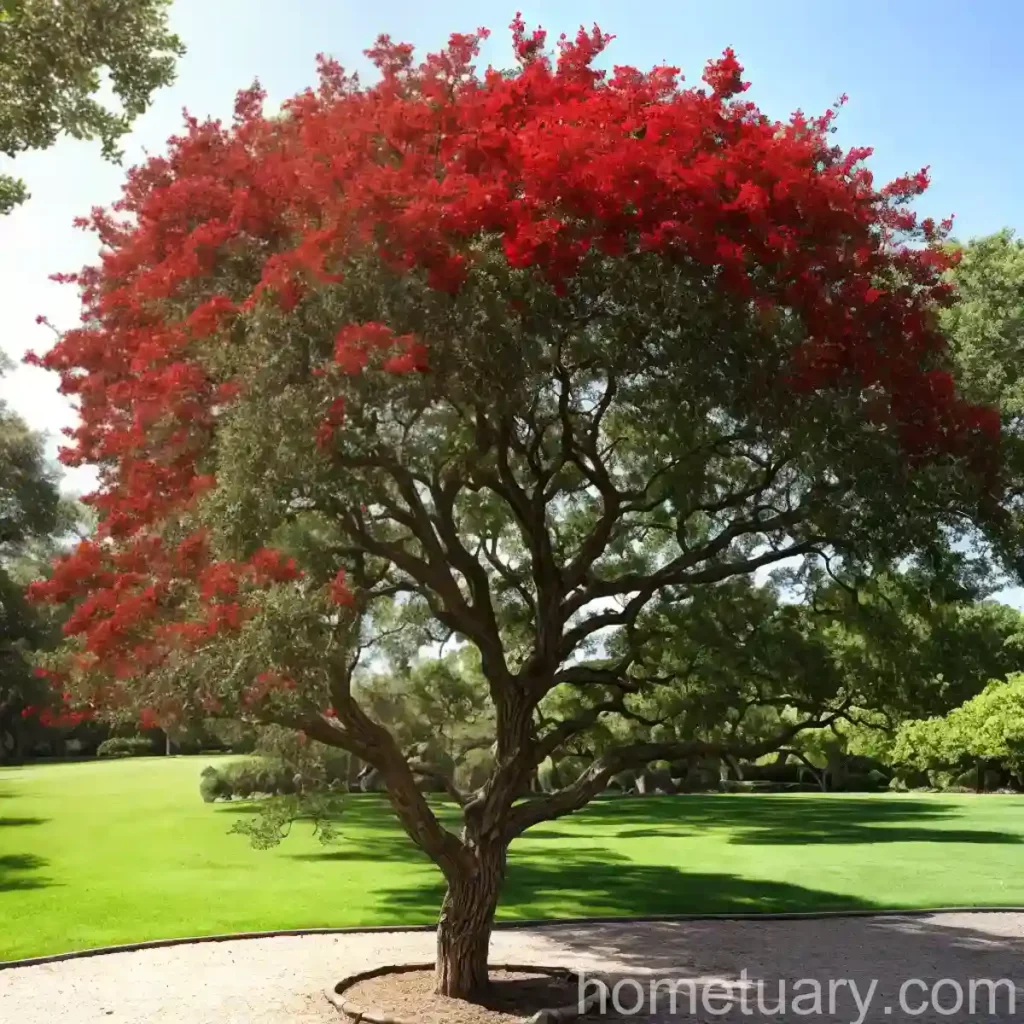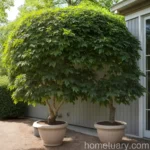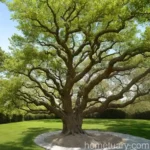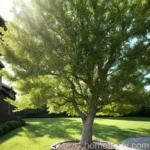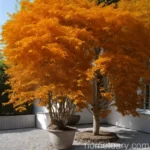Blackjack Oak (Quercus marilandica): A Comprehensive Guide
Plants are an integral part of our environment, contributing to ecosystem balance, biodiversity, and ecosystem functions. The blackjack oak (Quercus marilandica) is a captivating species that adds aesthetic and ecological value to various landscapes. In this comprehensive guide, we will explore the growth habits, characteristics, uses, and care tips for the blackjack oak, while delving into its ecological and cultural significance.
What is Quercus marilandica?
The blackjack oak, scientifically known as Quercus marilandica, is a deciduous tree species belonging to the beech family, Fagaceae. This species is native to the eastern and central United States, typically found in dry, sandy, and rocky upland areas.
Key Takeaways – Blackjack Oak (Quercus marilandica)
Before we delve into the details of the blackjack oak, let’s review its key attributes and significance.
- Growth Habits: The Quercus marilandica exhibits slow to moderate growth and tends to have a short trunk with a rounded, irregular crown.
- Characteristics: It is characterized by its dark, deeply furrowed bark, and deeply lobed, leathery leaves which are glossy green, turning russet-red in the fall.
- Tree Appearance: The blackjack oak features a compact and sturdy appearance, making it a desirable addition to landscaping projects.
- Uses in Landscaping: It is often used for its ornamental value, as well as its capacity to enhance wildlife habitats.
- Lifespan: The average lifespan of the blackjack oak is approximately 200-300 years in ideal conditions.
- Distribution: It is primarily distributed across the eastern and central United States, thriving in dry, acidic, and nutrient-poor soils.
- Wildlife Benefits: The tree provides habitat and food sources for various wildlife species, contributing to biodiversity and ecological balance.
With these key takeaways in mind, let’s delve into detailed aspects related to the cultivation, care, and ecological importance of the blackjack oak.
Culture
The culture of the blackjack oak encompasses its preferred environmental conditions, including water, sunlight, soil, and fertilizer requirements.
Water
The blackjack oak is well adapted to dry, upland areas and exhibits excellent drought resistance once established. However, during its early establishment phase, it may require moderate watering, especially in periods of prolonged drought. It is important to ensure that the soil is well-draining to prevent waterlogging, which may lead to root rot.
Sunlight
This species thrives in full sunlight and is intolerant of shade. When selecting a site for planting, ensure that it receives at least 6-8 hours of direct sunlight daily. In shaded conditions, the tree may exhibit reduced growth and vigor.
Fertilizer
While the blackjack oak is adapted to nutrient-poor soils, young trees may benefit from a balanced, slow-release fertilizer to support their initial growth. Once established, minimal fertilizer applications are necessary, as excessive fertilization may lead to imbalanced growth patterns and reduced drought tolerance.
Soil
The blackjack oak thrives in well-drained, acidic, and nutrient-poor soils. It is well adapted to sandy and rocky soils, making it suitable for xeriscaping and landscapes with poor soil quality. It is important to avoid planting in compacted or poorly-draining soils to prevent root suffocation and waterlogging.
Pruning
Pruning is a crucial aspect of blackjack oak maintenance, contributing to tree health, structural integrity, and aesthetic appeal. Proper pruning techniques and timing are essential to promote a strong and balanced crown structure.
Tree Pruning Techniques
When pruning the blackjack oak, it is important to focus on the following techniques:
- Deadwood Removal: Regularly remove dead, diseased, or damaged branches to prevent potential hazards and maintain tree health.
- Thinning: Thinning the crown helps improve air circulation and sunlight penetration, reducing the risk of disease and promoting overall tree vigor.
- Young Tree Training: Properly train young trees by eliminating competing and crossing branches, promoting a strong central leader, and establishing a well-balanced scaffold structure.
Pruning should be performed during the late dormant season to early spring to minimize stress and allow for rapid wound healing.
Propagation
The propagation of Quercus marilandica can be achieved through both seeds and cuttings. However, it is important to note that blackjack oak seeds require specific conditions for successful germination.
Seed Propagation
To propagate the blackjack oak from seeds:
- Seed Collection: Collect mature acorns from healthy trees in the fall when they begin to drop.
- Seed Preparation: Remove the acorn caps and soak the acorns in water for 1-2 days to enhance germination.
- Germination: Plant the acorns in well-draining, slightly acidic soil, and provide consistent moisture. Germination may take several weeks to several months.
Cutting Propagation
While less common, blackjack oak can also be propagated through hardwood cuttings, typically taken in late winter. However, success rates with this method may vary, and it requires specific expertise in handling and rooting cuttings.
Container Popularity
The blackjack oak’s adaptability to nutrient-poor soils and its compact growth habit make it suitable for container cultivation. This feature has contributed to its popularity in urban and landscape design, allowing for versatile placement in various outdoor settings, patios, and urban gardens.
Container Uses
The blackjack oak is often utilized in containers for:
- Urban Landscaping: It serves as a low-maintenance option for urban landscapes, commercial properties, and outdoor public spaces.
- Patio Decoration: Its compact form and ornamental value make it a desirable addition to patio gardens and outdoor living spaces.
The container planting of Quercus marilandica provides an opportunity to appreciate its unique aesthetic and ecological contributions in a more confined space.
Common Diseases
Like many plant species, the blackjack oak is susceptible to certain diseases and stressors that may impact its health and vitality. Understanding these common diseases and their preventive measures is essential for maintaining the vigor of this species.
Disease Diagnosis
Some common diseases that may affect the blackjack oak include:
- Oak Wilt: A fungal disease that disrupts the water-conducting vessels, leading to wilting and eventual dieback. Symptoms include leaf discoloration, wilt, and browning of the vascular tissues.
- Powdery Mildew: A fungal infection that results in a white, powdery growth on the leaf surfaces, reducing photosynthetic efficiency and weakening the tree.
- Root Rot: Excessive soil moisture or poor drainage can lead to root rot, causing gradual decline and wilting of the tree.
Early diagnosis and intervention are crucial in managing these diseases. Regular monitoring of tree health, proper cultural practices, and, in some cases, preventive fungicidal treatments can help mitigate disease impact.
Common Pests
In addition to diseases, the blackjack oak may also face challenges from various pests, including insect infestations and herbivorous threats.
Insect Pests
Some common insect pests that may affect the blackjack oak include:
- Gypsy Moth: The larvae of the gypsy moth feed on the foliage of the tree, potentially causing defoliation and weakening the tree.
- Oak Leafminers: These insects create small, winding tunnels within the leaves, impacting their photosynthetic capacity and overall tree health.
- Scale Insects: Scale insects, such as oak scales, can infest the bark and foliage, leading to reduced vigor and sap loss.
Regular inspection and early pest management strategies, such as targeted insecticide applications or biological control methods, can help mitigate pest pressures and protect the health of the blackjack oak.
Botanist’s Tips
As a plant scientist and enthusiast, I have some valuable tips for cultivating and caring for the blackjack oak. These insights aim to support successful growth and long-term health of this species.
Planting Considerations
When selecting a site for planting the blackjack oak, consider the following:
- Soil Assessment: Verify that the soil is well-draining, acidic, and nutrient-poor, as the blackjack oak exhibits optimal growth in these conditions.
- Sunlight Exposure: Ensure that the chosen site receives adequate sunlight, as this is essential for the tree’s vigor and foliage development.
Pruning Best Practices
Follow these best practices when pruning the blackjack oak:
- Timing: Schedule pruning sessions during the late dormant season to early spring to minimize stress and promote rapid wound closure.
- Selective Branch Removal: Remove branches strategically to maintain a balanced crown structure and promote overall tree health and aesthetics.
Disease Monitoring
Regularly monitor the tree for signs of diseases, such as unusual leaf discoloration, wilting, or abnormal growth. Early detection can facilitate prompt intervention and disease management.
Fun Facts
As we explore the blackjack oak (Quercus marilandica), let’s appreciate some intriguing and lesser-known facts about this remarkable tree species:
- The blackjack oak is also referred to as the ‘barren oak’ due to its ability to thrive in nutrient-poor and challenging environments.
- It is a valuable species for wildlife, providing crucial food sources and habitat for various birds, mammals, and insects.
- The wood of the blackjack oak is dense and durable, historically used for fuel, construction, and furniture making.
Links to External Resources
For additional information on the blackjack oak and related topics, consider exploring these external resources:
By exploring these resources, you can delve deeper into the ecological, cultural, and horticultural aspects of the blackjack oak and broaden your understanding of plant sciences.
In conclusion, the blackjack oak (Quercus marilandica) stands as a symbol of resilience, ecological significance, and aesthetic allure in various landscapes. By appreciating its unique characteristics, understanding its care requirements, and recognizing its ecological contributions, we can cultivate a profound respect and admiration for this captivating tree species.
As a plant scientist deeply invested in promoting understanding and appreciation for plant species, I hope this comprehensive guide has shed light on the blackjack oak’s remarkable attributes and significance. If you have any questions or would like to explore further insights into plant sciences, feel free to engage in the discussion. Thank you for joining me on this botanical journey of discovery.
Disclaimer: The information provided in this article is for educational and informational purposes only. It is not intended as a substitute for professional horticultural or arboricultural advice. Always consult with an experienced plant care specialist or arborist for site-specific recommendations and guidance.

